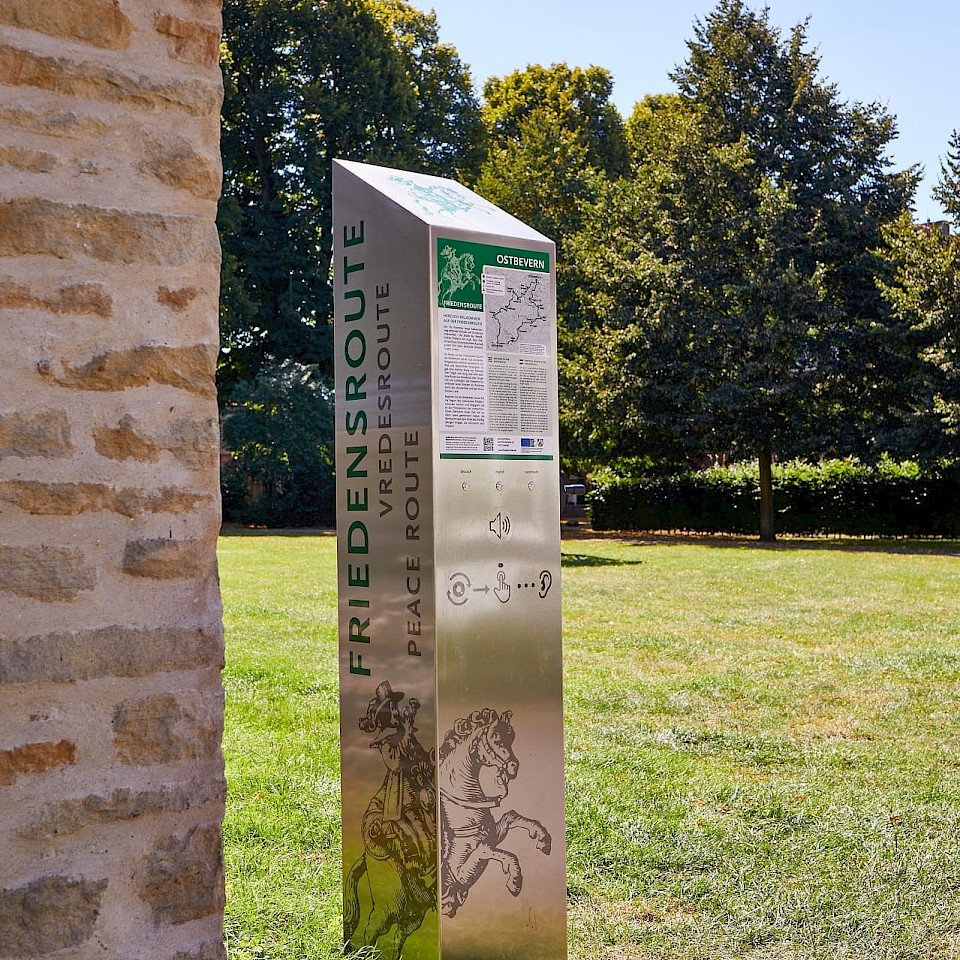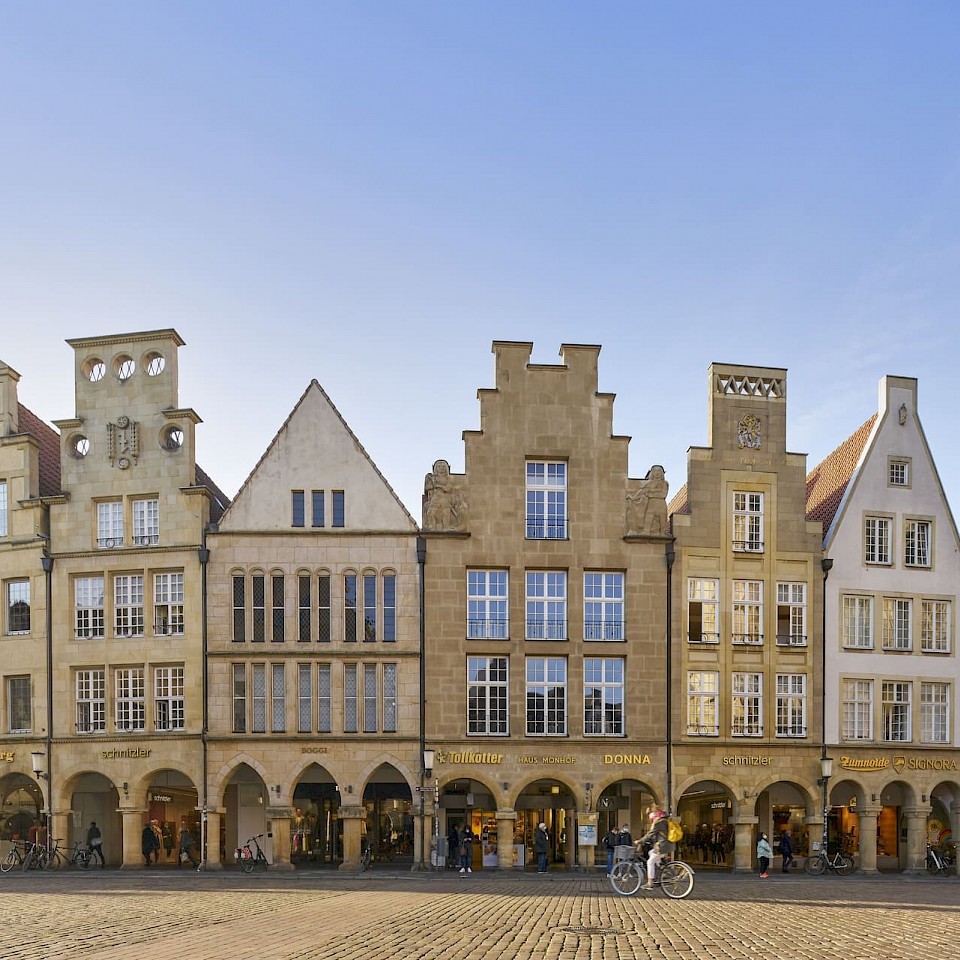
© Münsterland e.V./Philipp Fölting
Peace of Westphalia
For five years, the European powers negotiated in Münster and Osnabrück until they were able to end the Thirty Years' War in Europe. 24 October 1648 was the official day on which peace was concluded - and this was duly celebrated with numerous acts of state and festive events. To this day, the two cities of peace are inseparably linked with this event.
Why is the conclusion of peace still relevant today?
However, the conditions under which negotiations took place were conceivably difficult. There was no ceasefire and hostilities continued uninterrupted. Moreover, there were no internationally recognised and tested rules for such negotiations. The negotiations on the way to the Peace of Westphalia are therefore considered important milestones on the way to a European peace order and the development of today's international law.
You can find out why, how and who is still working for peace in Münster today on the Peace blog Münster.
Significant venues
Peace Route
These and other sites of the Peace of Westphalia are united on the Peace Route. This runs along the routes on which the peace riders travelled. Their task was to exchange news between the two places of negotiation. On the 163 km long route, you can expect a varied long-distance cycle route on historic equestrian paths. You can also cycle it as part of a package tour.












